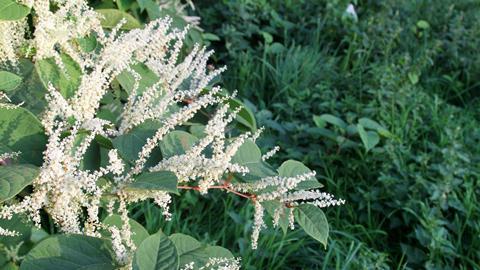The Supreme Court has ruled no damages should be awarded to a houseowner over the encroachment of Japanese knotweed which diminished the value of his home.
The appeal, brought by Bridgend Council, was unanimously allowed in a judgment handed down today.
Davies v Bridgend County Borough Council centres on a knotweed nuisance claim brought against the Welsh authority by Marc Christopher Davies. The plant was growing on land adjoining Davies terraced house and garden when he bought the property in 2004.
In 2013, the council ‘failed to implement a reasonable and effective treatment programme’ to get rid of the Japanese knotweed growing on its land. It was not until 2018, that the council implemented a reasonable and effective treatment programme.
The county court found there was a continuing nuisance from 2013 until 2018. Davies sought to recover damages of £4,900, the diminution in the value of his property because of the plant, despite treatment.
The council argued the claim was ‘fatally flawed’ as any diminution in value was caused by the ‘non-actionable presence’ of the plant ‘which occurred “well before 2004” and therefore before the defendant’s breach’, which began in 2013. However the Court of Appeal entered judgment for Davies of £4,900. The council appealed to the Supreme Court.
Lord Stephens, with whom Lord Reed, Lord Lloyd-Jones and Lady Simler agreed, said: ‘The narrow and main issue is one of causation, namely whether the residual diminution in value was caused by the defendant’s breach of duty in private nuisance.’
Allowing the appeal and finding no damages should be awarded, the judge said: ‘The diminution in value had occurred long before any breach by the defendant of the relevant duty in private nuisance first occurred in 2013. Accordingly, the application of the “but for” test in this case eliminates the defendant’s subsequent breach of duty as a causative factor.
‘The diminution in value would have occurred in any event so that there is no causal link between the defendant’s breach of duty and the diminution in value claimed.’
Lord Stephens added that the fall in value of the land had happened prior to and was not caused by the council’s ‘subsequent tortious conduct’.
In a concurring judgment, Lord Burrows said: ‘The claimant has not proved that the residual diminution in value would not have been suffered but for the breach of duty. This was because the [Japanese knotweed] was already present on the claimant’s land before 2013 so that the residual diminution in value had already been brought about by the natural, non-actionable, encroachment.’
This article is now closed for comment.



























3 Readers' comments